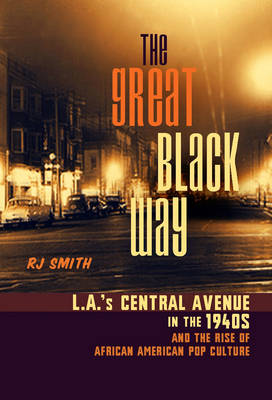This revelatory social history resurrects a largely forgotten era in African American history, and discovers a hugely influential scene, which spawned, among other things, the civil rights movement, rhythm and blues and hip-hop. "The Great Black Way" is a book about an unheralded era in American history, a time when the forbidden seemed possible. It is about 1940's African American Los Angeles, a period unknown by those who weren't there, but whose impact is ubiquitous today. It is about a decade of race riots and revelry in the streets; of protest and a new way of walking. Those who lived it experienced a cultural flowering and a sense that a race was making unprecedented progress. And when the moment was over, many hopes and lives were swept away by it. Central Avenue was the Great Black Way, the Main Stem. It was the heart of the Southern Californian black enclave, a settlement as old as the city itself. Blacks had been among the original settlers in LA, but by the 20th century a de facto Jim Crow system confined them to life within a few small areas of the city.
By the 1920s, Central Avenue was the black business and entertainment corridor, and in the 40s the threat of world war, and the opening up of California's burgeoning defence industry to black workers, led to a massive wave of black migration and a corresponding cultural ferment in the arts, culture and politics. It was here that rhythm and blues was spawned - in the ferment of Little Tokyo, emptied of its Japanese residents and packed by mid-decade with black musicians, independent labels and after-hours spots. Chester Himes fathered the black detective novel and a noir sensibility. Black comics took off minstrel blackface for the first time and addressed audiences directly with socially-tinged humour. And, Smith argues, the civil rights movement actually got its start on Central Avenue, where the strategy of building mass movements and giving power to ghetto dwellers gained favour in opposition to the top-down strategies of groups like the NAACP and the Urban League. Harlem's Renaissance had been driven by the intellectual elite; a group WEB DuBois called "The Talented Tenth".
But in LA, a new sense of black identity was arising from street level; and DuBois called LA's cultural leaders "the Debauched Tenth". Much that we take for granted today, from hip-hop and slang to modern-day street fashion, all flowed from the 1940s scene along the Great Black Way.
- ISBN10 1586482955
- ISBN13 9781586482954
- Publish Date 12 June 2006
- Publish Status Out of Stock
- Out of Print 13 December 2008
- Publish Country US
- Publisher INGRAM PUBLISHER SERVICES US
- Imprint PublicAffairs,U.S.
- Format Hardcover
- Pages 400
- Language English
